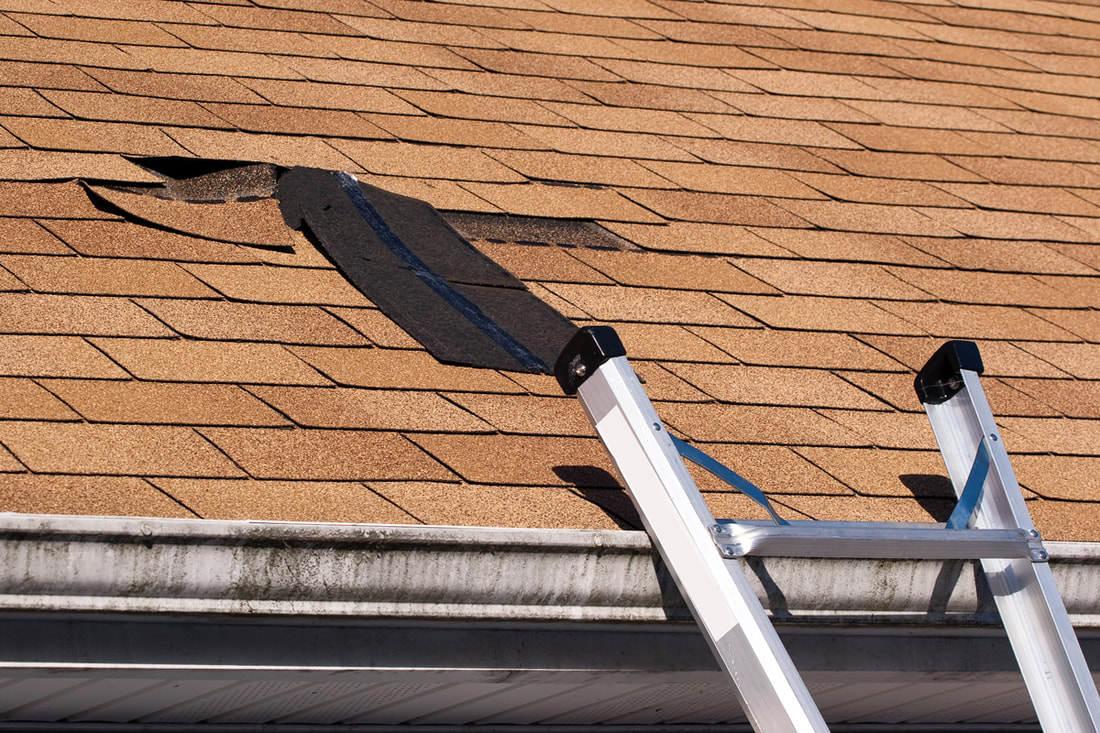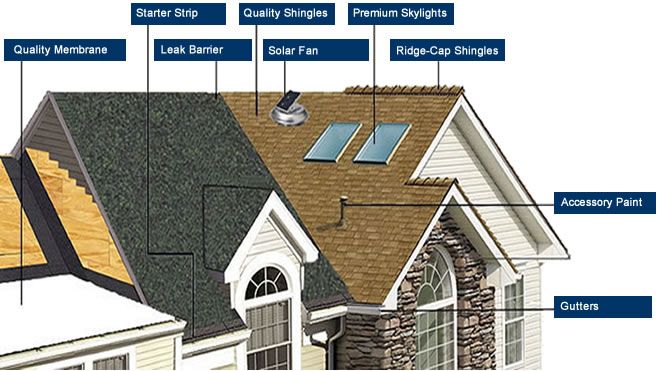Common Errors to Prevent During Rain Gutter Installation for Durable Outcomes
Reliable rain gutter installment is vital for ensuring the longevity and functionality of a home's drain system. Issues such as miscalculating gutter size, disregarding correct slope, and incorrect downspout placement can have considerable repercussions. Cleveland Roofing Solutions.
Miscalculating Seamless Gutter Size
When installing rain gutters, miscalculating rain gutter dimension can result in substantial concerns, including water damage and raised upkeep prices. The key function of rain gutters is to effectively direct rainwater away from a structure's structure. If seamless gutters are undersized, they can overflow during hefty rainfall, resulting in water pooling around the structure and potentially triggering architectural damages. Conversely, large seamless gutters may be unneeded and can create aesthetic discrepancies, while likewise enhancing the price of products and setup.
To stay clear of these risks, it is important to assess the certain demands of the property based upon aspects such as roofing system dimension, pitch, and local rainfall patterns. Calculating the appropriate rain gutter size entails understanding the quantity of water that the roof covering will certainly collect and ensuring the seamless gutter system can fit it. Using market standards and guidelines can aid in determining the suitable measurements for the seamless gutters needed.
Additionally, seeking advice from specialists that have experience in seamless gutter setup can offer beneficial understandings and aid make sure the appropriate computations are made. Inevitably, taking the time to properly determine and pick the appropriate rain gutter size will safeguard and produce long-term benefits versus possible water-related problems.

Overlooking Proper Slope
Correct incline is essential for an effective rain gutter system, as it directly affects water drain efficiency. A well-designed rain gutter should have a slight slope, usually around 1/4 inch for every single 10 feet of size, routing water towards the downspouts. Failing to establish this incline can bring about water pooling in areas of the seamless gutter, enhancing the risk of overflow, clogs, and eventual damages to the structure.
Additionally, inappropriate incline can intensify wear and tear on the seamless gutter materials, leading to premature failure and pricey repair work. Home owners might discover that water cascades over the side during heavy rains, developing potential risks around the foundation and landscaping. Additionally, stagnant water can come to be a breeding place for pests and may urge mold and mildew development.

Missing Supports and Hangers
A durable gutter system depends heavily on using assistances and hangers, which are essential for maintaining architectural stability and reliable water flow. Disregarding these elements can lead to drooping gutters, causing improper drain and possible water damages to your home.
Supports and hangers need to be installed at ideal periods, usually every 2 to 3 feet, depending on the seamless gutter dimension and material. This guarantees that the weight of the ice, debris, and water does not jeopardize the seamless gutter's capability. Avoiding these important elements can create stress factors in the system, leading to leakages and premature wear.
Furthermore, the option of materials for assistances and wall mounts should not be ignored. Selecting durable, corrosion-resistant materials will certainly improve the durability of the gutter system. Plastic may appear cost-efficient but can compromise gradually, while steel sustains deal enhanced stamina and strength.

Overlooking Downspout Positioning
Effective downspout placement is a vital element of seamless gutter installment that is usually overlooked, yet it plays a substantial role in see this ensuring optimum water drainage. Properly located downspouts straight water away from the foundation of the home, stopping prospective water damage or erosion. A typical mistake is to install downspouts too near to the structure, which can bring about water merging and raised risk of structural problems.
Furthermore, the number and area of downspouts ought to be strategically planned based upon the roof size and slope. Insufficient downspout positioning can cause gutters to overflow during hefty rainfall, leading to water plunging over the edges and possibly damaging landscape design or exterior siding - Cleveland Roofing Solutions. It is recommended to position downspouts at intervals that permit appropriate water flow, typically every 30 to 40 feet of gutter size
In addition, consider the terrain bordering the home. Downspouts must be guided in the direction of water drainage systems or far from the home to enhance water circulation performance. In summary, precise planning of downspout positioning is essential for efficient water management and the lasting resilience of the rain gutter system. Proper placement ensures that water is effectively carried away, protecting the honesty of the residential property.
Ignoring Sealing and Maintenance
While lots of house owners visit our website concentrate on the first installation of their gutters, neglecting sealing and maintenance can lead to substantial lasting issues. Over time, the seams and joints of rain gutters can degrade, specifically if not sufficiently secured.
Regular upkeep is equally important. Debris such as leaves and branches can gather in seamless gutters, obstructing water flow. This clog can result in overflow, harming the roofing system and home siding. Routine cleaning and examination of gutters guarantee that they operate successfully, extending their life expectancy and preserving their performance.
Furthermore, property owners ought to consider using sealer to joints yearly, particularly in regions vulnerable to severe climate condition. This aggressive approach lessens the danger of leakages and enhances the gutter system's toughness. By focusing on securing and see this upkeep, home owners can prevent expensive repairs and maintain the stability of their homes, ultimately causing a much more resilient and effective rain gutter system.
Final Thought
To conclude, meticulous interest to information during seamless gutter setup is vital for making sure lasting efficiency. Preventing usual errors such as overlooking rain gutter size, neglecting correct slope, leaving out supports and hangers, poorly putting downspouts, and overlooking securing and upkeep will substantially alleviate prospective issues. By sticking to these standards, the stability and performance of the rain gutter system can be preserved, inevitably extending its lifespan and effectiveness in taking care of water drainage.
When mounting seamless gutters, miscalculating gutter size can lead to significant problems, including water damage and raised maintenance costs. Determining the right rain gutter size involves understanding the volume of water that the roof covering will certainly collect and making sure the rain gutter system can fit it.Correct slope is vital for a reliable gutter system, as it directly influences water drain performance. Insufficient downspout placement can trigger rain gutters to overflow throughout hefty rainfall, leading to water cascading over the edges and potentially harmful landscape design or house siding. In summary, precise planning of downspout positioning is crucial for reliable water management and the long-term resilience of the rain gutter system.